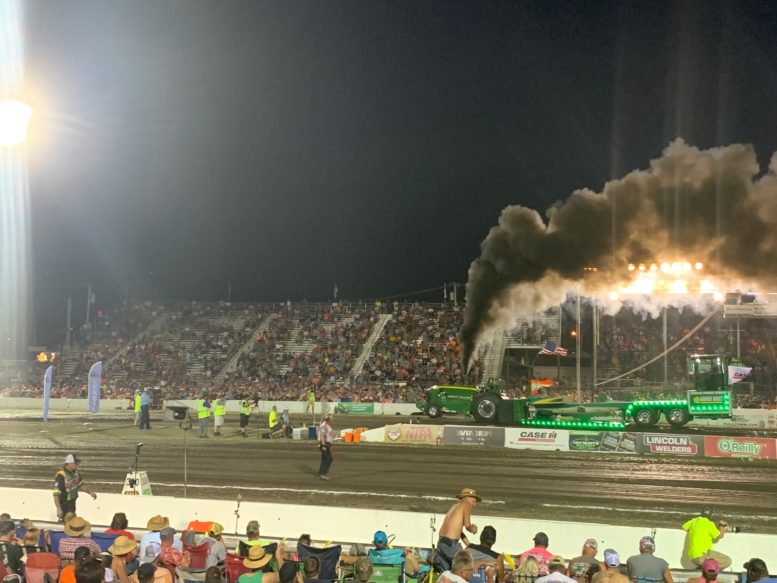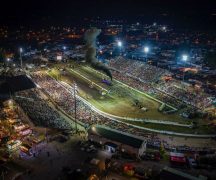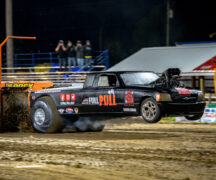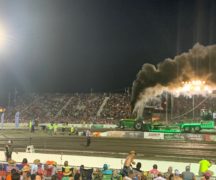BY ANDREW BAILEY
BG Independent News Correspondent
The first time I heard of the National Tractor Pulling Championships — or any tractor pull — was over the winter break of my sophomore year while I was working at a Wendy’s in Dublin, Ohio.
An older couple came in, and while I was taking their order, the wife started chatting with me about where I went to school. I told her BGSU, and both their faces lit up.
“Have you been to the tractor pull?”
I hadn’t, so the husband pulled a small polaroid picture out of his wallet. It was him standing next to his rig. I couldn’t make heads or tails of all the machinery; I wasn’t sure if it was even a tractor.
They were so excited to talk about it. But my blank stare of confusion was a signal that I came from a significantly different part of Ohio, a rapidly growing city of about 50,000 people where our biggest events are the Memorial Golf Tournament and the Dublin Irish Festival, and my only exposure to rural life is visiting my mom’s family in Vevay, Indiana.
I attended my first pull on Thursday and Friday after meeting dozens of Blue Shirts and learning about their behind-the-scenes work. After a few discussions with them, I realized I’d be walking into a sport unlike anything I’d ever seen before.
One of the first things I noticed was the money behind the tractors. Mike Erford, the president of the Northwest Ohio Tractor Pullers Association, told me it’s “a rich man’s sport.”
“I’d be doing it myself if I could afford it,” he said.
He told me most the tractors have multiple motors around $100,000 each, as well as multiple backups. And those are just one piece of the tractor. For each individual pull, the motors seemed to blow out when the tractor pulled the sled as far as it could, so that’s six figures for one five-second pull at one event.
The wealth gap between the competitors and the audience is comparable to most other sports, but the major differences lie in two places: the individuality of the pullers and the simplicity of the action.
Unlike football or basketball, the tractors don’t incorporate multiple sponsors in their designs and aren’t owned by 30 stakeholders. The pullers don’t have to work under the restrictions of a company that owns them, just the rules of the pulls. And they use their own money to build and maintain their rigs. It’s a sport that truly lives in free market capitalism (an apt description I have to credit to one of my editors, David Dupont).
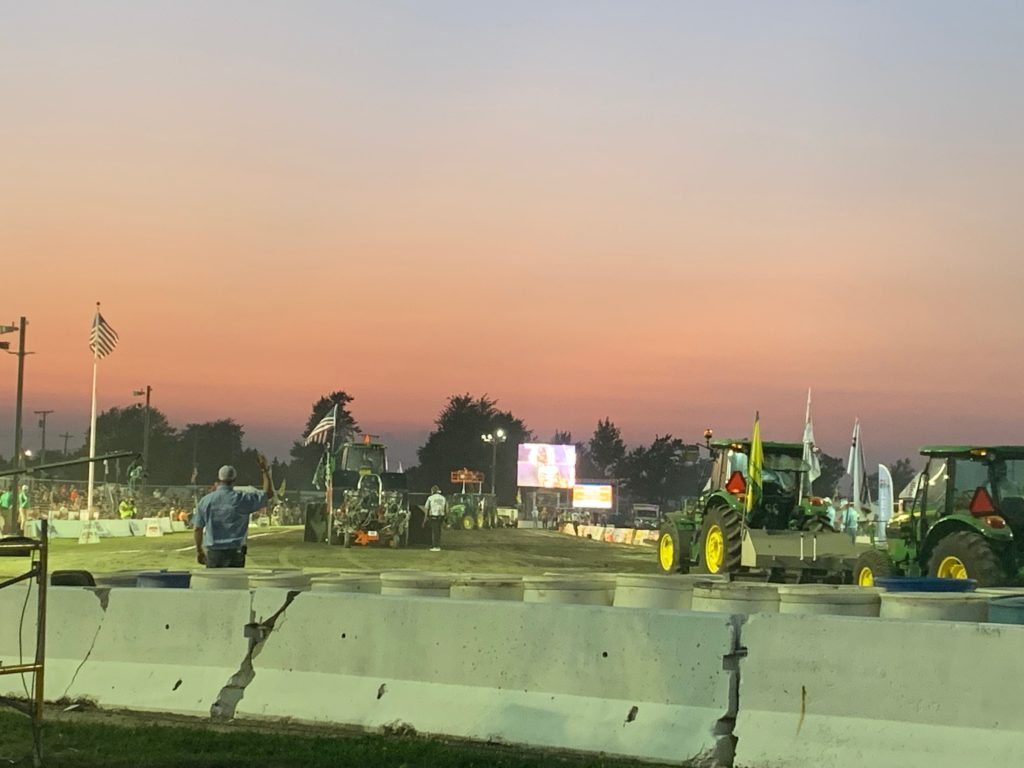
And the sport itself — where a tractor attaches its back end to a weighted sled, guns it, and pulls it as far as it can down a straight track — gives the pull a low barrier of entry for fans. They just need to understand what division they’re watching and be able to see the track.
Most other American sports are complicated, and you need to learn the rules and the history of the teams to enjoy them in the traditional sense. Tractor pulls don’t have offsides, penalty boxes, or 10 different positions.
The sport is simple, and that puts the attention on the tractors and their pullers. This means the pullers must make an impact to gain recognition. Whether it’s a memorable design, a distinct engine sound, or something else to set it apart, the tractors are the star of the show.
While last year’s pull was unfortunately canceled due to COVID, it was on this year despite the surge in the Delta variant. Erford said it happened this year because they were too far along in planning to consider alternatives.
After a year of not having the largest pull in the world, the energy from the crowd was palpable.
And the disregard for COVID safety was blatant. I spent about three or four hours at the event over two days, and I could count the number of masks I saw on both hands.
But it wasn’t a complete spit in the face of health and safety guidelines. There was a vaccine clinic available. But it will be interesting to compare the case count in Wood County from before and after the pull.
I was masked at the event and had a couple people come up to and say general anti-mask catchphrases — “Just build up your immune system;” “You’re outside so take it off;” “I can’t hear you with that thing on your face.”
As I walked around the grandstand areas, the southside stands were mostly focused on the event and didn’t pay much attention to me, despite my mask making me stand out. But the northside stands on Friday evening, known as “the zoo,” were much different. As I walked up and down the stairs, I could make out multiple hecklers drunkenly yelling about my mask, and I got plenty of uncomfortable stares.
As a subculture that is comprised of many politically like-minded people, the pull was less outwardly conservative than I expected it to be. Despite the anti-mask sentiments, it was a surprisingly politics-free zone. I only saw a couple people wearing political apparel, but nothing aside from that.
Overall, the event was an experience well worth my time. It was interesting to see, especially since I had never heard of it, despite attending BGSU since 2017. I doubt it’s something I’ll ever go to again, mostly because of the ear-piercing engine roars, but it was a brief glimpse into a sport with a rabidly devoted fanbase, and I’m glad fans were able to enjoy the annual pull after missing it last year.

